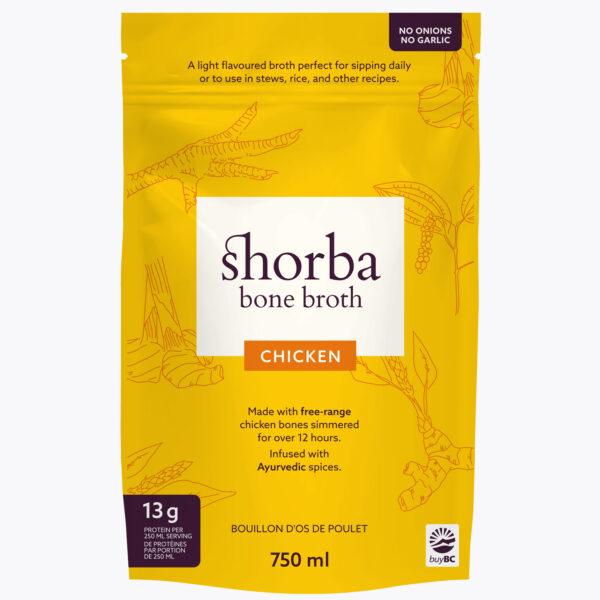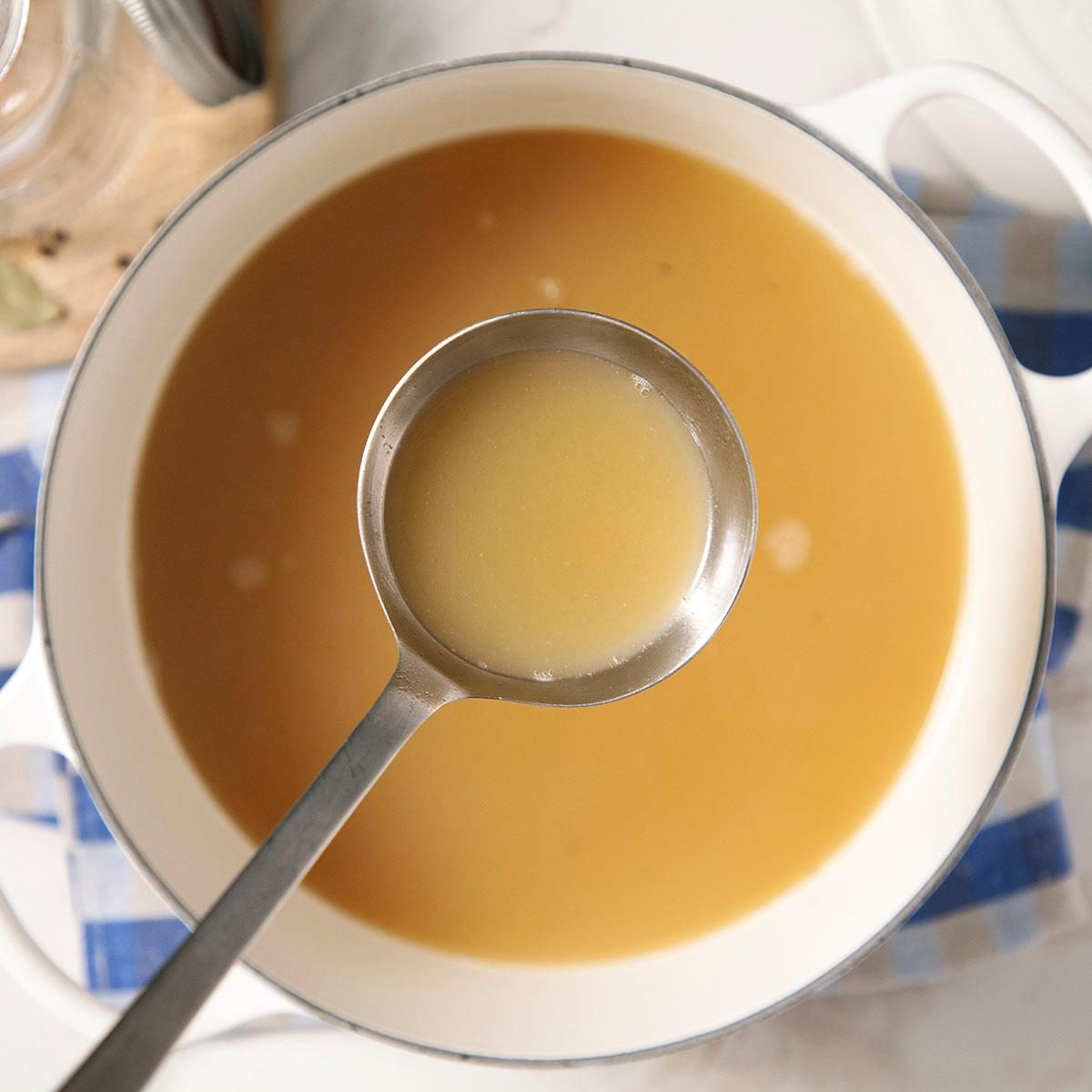The Ultimate Guide to Delighting In and making Organic Bone Broths in the house
Bone broth has gained attention for its numerous wellness advantages and cooking versatility. Crafting natural bone brew in the house permits individuals to control the top quality of active ingredients, making sure a nutritious end result. Recognizing the selection of bones, vital flavor elements, and proper cooking strategies is vital. As the procedure unravels, one might ask yourself how to boost their brew past the basics and integrate it into daily meals for boosted flavor and nourishment.
Recognizing the Health Benefits of Bone Broth
Although bone brew has actually been a staple in various cuisines for centuries, its health and wellness benefits have actually gained significant interest over the last few years. Rich in collagen, amino acids, and minerals, bone brew is often proclaimed for its prospective to sustain joint health and wellness, boost digestive tract feature, and enhance skin elasticity. The jelly originated from cooked bones might help digestion and aid seal the intestine lining, possibly easing concerns like leaky gut syndrome.Furthermore, the visibility of nutrients such as glucosamine and chondroitin may contribute to minimized swelling and discomfort alleviation in joints. Furthermore, bone broth is moistening and can offer as a healthy base for stews and soups. Many advocates likewise claim that it increases the immune system, many thanks to its mineral profile. Generally, the revival of passion in bone broth is connected to its regarded capability to promote general well-being and assistance numerous physical functions.
Picking the Right Bones for Optimum Taste and Nourishment
What aspects should one consider when selecting bones for brew preparation? The kind of bones used considerably affects both taste and dietary value. Initially, it is vital to select bones that include a mix of marrow bones, joint bones, and meaningful bones. Marrow bones offer healthy and balanced fats and abundant flavors, while joint bones add collagen, improving the brew's dietary profile.Additionally, sourcing bones from pasture-raised or grass-fed animals warranties better and more nutrients, as these pets are usually much healthier. The quality of the bones is also important; choosing bones from local butchers or farmers' markets can ensure ideal taste. Bone dimension matters as well; bigger bones release more gelatin, leading to a richer brew. Considering the kind of pet-- poultry, fish, or beef-- can influence the final taste, allowing for flexible broth options customized to specific preferences.
Essential Components for a Savory Bone Brew

Quality Bone Selection
The foundation of a savory bone brew hinges on the cautious option of high-quality bones. Sourcing natural, pasture-raised or grass-fed bones is crucial, as these options are much more most likely to be devoid of unsafe ingredients and give exceptional nutrients. Ranges such as lamb, beef, or poultry bones each give distinct flavors and wellness advantages. Bone types, consisting of marrow bones, knuckle bones, and oxtails, add jelly and collagen, enhancing the broth's structure. Selecting bones with a mix of meat and connective cells can likewise include richness and depth. Additionally, selecting bones with visible marrow assures a nutrient-dense brew, raising the general high quality. Eventually, investing time in top quality bone choice prepares for a tasty and nourishing broth.
Fragrant Flavor Boosters
Choosing top notch bones sets the phase for a abundant and healthy bone brew, however it is the enhancement of aromatic flavor enhancers that absolutely elevates the recipe. Ingredients such as onions, garlic, and carrots not just give sweetness however also add depth to the brew. Fresh herbs like bay, parsley, and thyme leaves add a great smelling note, while spices such as black peppercorns and cloves present heat and intricacy. In addition, incorporating a dash of apple cider vinegar can aid extract minerals from the bones, enhancing the broth. These taste boosters produce a harmonious blend, changing a simple brew right into a mouthwatering structure for sauces, stews, or soups, making it a flexible part in any kind of culinary arsenal.
Step-by-Step Overview to Making Bone Broth at Home
Developing bone brew in the house can be a fulfilling cooking venture that boosts both flavor and nourishment in various recipes. To begin, one must select top notch bones, preferably from organic or grass-fed sources. Toasting the bones at 400 ° F for about 30 minutes can escalate the flavor. Next off, move the baked bones to a huge pot or slow-moving stove and cover them with chilly water. Including a dash of vinegar aids essence minerals from the bones.Include fragrant veggies like onions, carrots, and celery for added depth, along with natural herbs and spices as wanted. Bring the mix to a boil, then minimize to a simmer. It is important to allow the brew simmer for a minimum of 12 hours, however longer is more effective for maximum richness. Ultimately, pressure the brew with a fine-mesh sieve and store it in airtight containers, ready to elevate meals with its nutritious essence.

Tips for Perfecting Your Bone Broth Simmer
While simmering bone broth, maintaining the ideal temperature and timing is necessary for attaining a abundant and tasty result. A mild simmer, ideally in between 190 ° F and 210 ° F, aids extract optimum nutrients and flavors without steaming, which can make the broth cloudy. It is recommended to check the pot very closely, readjusting the warm as necessary to maintain this simmer.Timing is also vital; a longer simmer, commonly varying from 12 to 2 days, permits much deeper taste removal and collagen release. For poultry bones, a 12 to 24-hour simmer is adequate, while beef bones gain from longer cooking times.Additionally, skimming any foam or impurities that increase to the surface area throughout the very first couple of hours can improve the broth's clearness and preference. Making sure the pot is covered during simmering aids to preserve moisture and escalate the tastes, making for a much more satisfying end item.
Imaginative Ways to Use Bone Brew in Your Food preparation
Including bone brew into different recipes raises both flavor and dietary value. Cooks and home cooks alike find that using bone brew as a base for soups and stews boosts depth and richness, changing straightforward recipes into hearty dishes. It can also be used in risottos, where the brew replaces water, enabling the grains to absorb its savory essence.Additionally, bone brew acts as a superb food preparation fluid for grains like quinoa or rice, infusing them with nutrients and flavor. For an included twist, it can be used in braising meats, leading to tender, tasty outcomes. Even sauces profit from a splash of bone brew, improving their preference profile.Moreover, bone broth can be included into healthy smoothies for an unforeseen wellness boost, supplying protein and nutrients without jeopardizing taste. These imaginative applications display the versatility of bone broth in everyday food preparation, making it an indispensable kitchen area staple.
Saving and Preserving Your Home Made Bone Broth
Correct storage and preservation of homemade bone broth is important for maintaining its taste and dietary advantages. Cold strategies and refrigeration finest practices play a crucial duty in prolonging the brew's service life. Understanding these approaches can assist assure that the brew continues to be secure and scrumptious for future usage.

Freezing Techniques Described
Freezing strategies are important for successfully storing and protecting self-made bone brew, ensuring its rich tastes and nutrients stay intact for future use. To ice up bone brew, it is suggested to allow it awesome completely prior to transferring it to storage space containers. Glass jars, silicone molds, or durable freezer bags are appropriate options. When using jars, leave space at the top for expansion during cold. Portioning the brew right into smaller quantities allows for simple thawing and lessens waste. Tag containers with the day and materials for simple recognition. For peak top quality, eat the More Bonuses frozen broth within 3 to six months - Organic Bone Broths. Thawing can be done in the refrigerator or by utilizing a microwave, making sure that the brew is warmed thoroughly before consumption
Refrigeration Best Practices
While lots of focus on cold as a method of preservation, refrigeration likewise plays a crucial duty in keeping homemade bone brew successfully. Once cooled down, bone brew need to be transferred to closed containers, ensuring minimal air exposure to stop putridity. It is suggested to cool brew within two hours of cooking to keep its quality. Normally, homemade bone brew can be kept in the fridge for approximately five days. Classifying containers with dates can aid track quality. For peak flavor and see this here safety, brew must be reheated to a rolling boil before consumption. If longer storage is required, freezing remains an outstanding alternative, yet proper refrigeration methods ensure that bone broth remains nutritious and delicious for temporary usage.
Frequently Asked Questions
Can I Use Frozen Bones for Making Bone Brew?
The concern of making use of icy bones for bone broth arises regularly (Organic Bone Broths). Experts concur that icy bones can be used efficiently, yet they should be thawed before cooking to assure perfect taste and nutrient removal
Exactly How Lengthy Can I Shop Homemade Bone Broth?
:max_bytes(150000):strip_icc()/336138-basic-chicken-soup-08-805a2296589840f9bf9ada60e7e1b644.jpg)
Is It Safe to Reheat Bone Broth Multiple Times?
Reheating bone brew numerous times can present security worries - Beef Broth. Each reheating cycle raises the danger of microbial development. It is recommended to reheat just as soon as and store any type of leftovers immediately to ensure safety and quality
Can I Add Veggies to the Broth for Flavor?
Including veggies to broth improves flavor and dietary worth. Common options include carrots, onions, and celery. The veggies instill their significance right into the brew, creating a richer and a lot more full-flavored end product.
What's the very best Way to Defrost Icy Bone Broth?
To thaw frozen bone broth, one can put it in the fridge overnight, utilize a microwave on reduced warmth, or submerge the sealed container in cozy water, guaranteeing even official site defrosting without jeopardizing flavor or nutrients. It is important to choose bones that include a mix of marrow bones, joint bones, and weighty bones. Marrow bones offer healthy fats and rich flavors, while joint bones contribute collagen, enhancing the brew's dietary profile.Additionally, sourcing bones from pasture-raised or grass-fed pets warranties higher high quality and more nutrients, as these pets are commonly healthier. Bone kinds, consisting of marrow bones, knuckle bones, and oxtails, add gelatin and collagen, enhancing the brew's structure. Selecting premium bones establishes the stage for a abundant and healthy bone brew, yet it is the addition of fragrant flavor boosters that absolutely raises the recipe. Even sauces profit from a splash of bone broth, enhancing their preference profile.Moreover, bone broth can be incorporated into smoothies for an unexpected wellness boost, giving protein and nutrients without compromising taste.